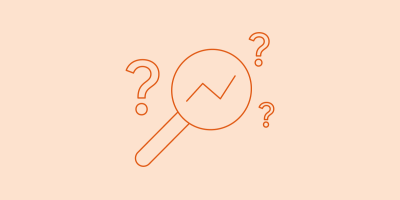
Collection
What Is a Customer Data Platform?

Collection :
Creating a good customer experience isn't easy, but if a brand gets it wrong, it can cost them dearly. Nearly three in four consumers are likely to switch to a competitor after one bad experience. This makes it more important than ever for brands to listen to and learn from consumers to create relevant customer journeys.
Take, for example, holiday shopping. Consumers want to get great gifts for their loved ones and will likely embark on a customer journey that follows a path like this one:
- Conduct an online search for the perfect gift — let’s say it’s an air fryer.
- Visit multiple websites to find out which brands are recommended and what buyers have said about their purchases.
- After narrowing the options, visit websites to compare prices, features, return policies, and the like.
- Purchase the air fryer that meets budgetary, delivery, and other needs.
With a customer data platform (CDP), a retailer can jump in with marketing that targets that specific customer. If the would-be buyer clicks the dropdown with the air fryer’s specs, that data could then be used to serve digital ads that show a video touting the product’s features. Or, if they’ve bought from the retailer before, the retailer could use that information to personalize an email with customer testimonials that rave about the air fryer’s various features. Each touchpoint becomes more personalized by behavioral data ingested by a CDP.
To deliver this customer-centric experience, brands need a single source of truth for their customer data. That’s what a CDP is designed for — it unlocks and unifies customer data to generate rich insights that marketers can use to drive engagement and return on investment (ROI).
Let’s take a look at the benefits, key features, and other important details to consider for CDPs.
What is a customer data platform (CDP)?
A customer data platform (CDP) is enterprise software that collects and unifies data across channels and systems to create a single source of truth for customer data. It pulls together zero-, first-, and third-party data to build comprehensive 360º customer profiles and updates them in real time. This gives marketers the intelligence they need to recommend products and services at the right time on the right channel with the right message. |
Organizations find numerous use cases for CDPs. Enterprise CDPs unify all customer data, use machine learning to perform sophisticated analyses, and provide meaningful reporting to help teams make informed decisions.
CDPs also help teams predict everything from product recommendations to optimal email send times and next-best channel engagement tactics. For example, customers who have already bought certain products should no longer receive ads for those items. Instead, they may be served ads for goods they’ve looked at on your website but haven’t yet purchased, or you might tweak your ad spend to reach new audiences altogether.
CDPs are unique in their ability to uncover actionable insights that drive marketing strategy; most CMOs have one on their technology wishlist. We’ll explore the features and benefits of a CDP shortly, but first let's take a look at what exactly qualifies as customer data.
What is customer data?
Customer data is every piece of information about your customer that can be captured and recorded. It could be contact details, demographic information, behavioral information (what they like to buy and how often they buy it), as well as interaction history (which web pages they visit and email lists they sign up for). |
For many large organizations, the struggle to capture and understand customer data — and then use it to build omnichannel experiences — is real. Our 2023 Customer Experience Trends Report finds that only 43% of marketers “slightly agree” that their organization knows how to use customer data to create personalized digital experiences. But, knowing how to use customer data is a cornerstone of personalization. A CDP allows for more finely tailored personalization by creating unified profiles for each customer, so marketers can rest assured that they’re reaching the right customer at the right time with the right message. Building knowledge on how to execute data-driven campaigns is pivotal to competitive advantage in any market.
To help organizations create these personalized customer experiences, a CDP manages a range of customer data including:
- Demographics
- Geography
- Device preference
- Channel preference
- Purchase history
- Most recent browsing and/or email behavior
- Customer service history
- Lifetime value
- Propensity to engage
- Likelihood to buy
- Next best product recommendation
- Next best channel
- Likelihood to churn
A CDP solution employs a unique feature set to unify this customer data and unlock insights that can be used to improve every step of the customer journey. These data types commonly fall into three categories: zero-, first-, and third-party data:
- Zero-party data is information a customer volunteers, such as their name and email address, which they might share at an on-site event.
- First-party data is information that an organization compiles from its digital properties, such as which of its webpages someone visited.
- Third-party data is information acquired from an outside party that typically uses cookies to gather the data, though it can also include sources like public information from government sites to pull demographic profiles and other data.
How do CDPs work?
A CDP works a lot like the human brain. It collects and unifies raw data from all available sources, channels, and systems to translate a massive amount of information into useful insights, predictions, and possible actions. In enterprise software terms, a CDP unlocks and unifies all available customer data to create comprehensive customer profiles that inform 1:1 personalization across every touchpoint of the digital customer journey.
When a CDP is added to a martech stack, it integrates with all selected data sources to create a single source of truth for customer data. This source is organized into 360º customer profiles that are updated in real time and analyzed by machine learning algorithms to find deeper insights into customer behaviors. Ultimately, a CDP uses customer data to give organizations the intelligence they need to deliver consistent, relevant omnichannel messaging.
CDP capabilities
While there are a range of CDP types, they can generally be organized into a few core categories, each with a distinct set of customer data platform features. Organizations that are considering investing in a CDP should define their required capabilities and then evaluate each solution based on those needs. Let’s look at some of these CDP capability essentials.
Identity resolution
Sales and marketing teams need to attach customer behavior to a single record or profile, but this isn’t possible when there are multiple customer IDs across siloed systems. A CDP uses APIs to continuously monitor every customer interaction and accurately resolve customer identities. This feature ensures that any relevant behavior is attributed to the correct identity, and teams aren’t sending inconsistent messages to the same customer because of duplicate customer IDs.
Analytics
Out-of-the-box analytics, reporting, and dashboards are crucial tools for both technical and non-technical users. Robust CDP analytics make it possible to gain insights at a glance and simplify complex decisions into actions. Shape customized analytics to meet organizational needs and tie engagement metrics back to what really matters: customer lifetime value.
Machine learning
Machine learning (ML) powers likelihood models, advanced clustering, and recommendations, which enable marketers to drive the right experience for each customer at scale. It helps teams predict when customers will pay full price, segment audiences based on new behaviors, anticipate each customer’s next step, and more. CDP machine learning gives both data scientists and non-technical users the tools they need to fulfill their goals.
Cohort analysis
Cohort analysis makes it possible to gain insights into campaign performance at the cohort level across channels and campaigns. It’s used to focus on selected and previously selected audiences, as well as identify emerging audiences (e.g., Instagram users who sign up for an email newsletter). Cohort analysis can also be useful over time to report on sales, campaign performance, and profile analysis.
Interactive queries
Interactive queries provide full SQL access to cleansed, processed, and enriched data in the CDP. This includes customer summaries, transaction details at the line level, atomic events, and much more. All data is automatically refreshed daily with zero setup and maintenance.
Data sharing
Data sharing tools allow data from a CDP to be integrated into other organizational processes. This eliminates the costs, headaches, and delays associated with legacy data-sharing methods that deliver only slices of old data. Instead, data is immediately available for use by all teams – no transformation, data movement, loading, or reconstruction required.
Integrated marketing data
Most companies have a number of existing databases that need to be integrated into a CDP. Integrated data features combine and organize existing customer data from multiple sources into a single system.
Real-time connectors
CDPs use real-time connectors to ingest data from different systems and make it usable in the 360º customer profile. Now, when a customer makes a purchase, their customer profile is updated immediately, and the next marketing message can be personalized for their relevant channel and future actions.
Benefits of a CDP
Advantages of a CDP are manifold. Armed with one, enterprise-level organizations can quickly adapt to changing behavioral landscapes, acquire more customers, reduce churn, optimize the digital experience, increase conversion, and grow customer lifetime value.
Of course, those aren’t the only benefits of a CDP, but, to get a more in-depth picture of what those may be, check out this article that takes a microscopic look at six benefits of a CDP.
Who needs a CDP?
CMOs, VPs, and marketing directors who want to create personalized omnichannel customer experiences need a CDP. B2C and B2B brands across all industries, especially online retailers, can use a CDP to increase customer engagement, reduce total cost of ownership for marketing technology, and grow their customer lifetime value metrics.
The capabilities of a CDP give every member of the marketing team better insights into how they can improve their part of the customer journey or maximize campaign performance. Any brand that wants clear and actionable insight into their customers, the ability to personalize messaging and offers, or to make better predictions about customer behavior needs a CDP.
What a CDP is not
Like many enterprise software spaces, the martech landscape is vast and always growing! With so many solutions, there’s bound to be overlap, making it confusing to know where one stops and the next begins.
CRM, DMP, data lake, CDP (oh my)? It can be hard to tell the difference between all the technology solutions used for managing customer data. Doesn’t a CRM do everything a marketing organization needs? Not necessarily on an enterprise scale. CRMs and other solutions each address a piece of the larger data problem that CMOs need to solve but not always all of them. This is why many brands that have a CRM, data management platform (DMP), and data lake still need a CDP.
Getting started
A CDP is the best technology available for wrangling customer data into a central location for organization-wide use and optimization.
To learn more about how Acquia CDP can help you organize and harness the power of your customer data, get in touch for a demo and we’ll show you.
This article was originally published in 2022 and has been updated to remain current.


